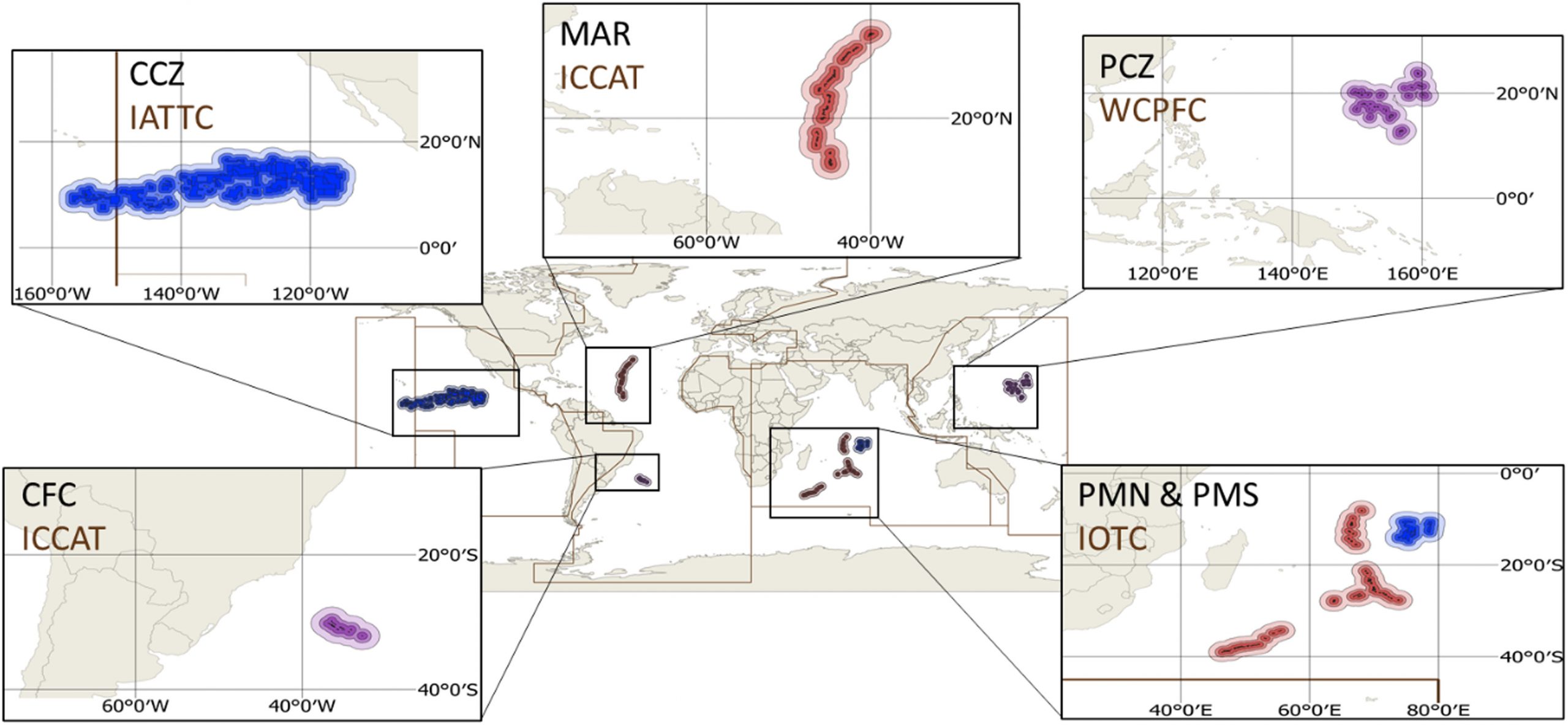Reviewing: Van der Grient, J.M.A, Drazen, J.C., 2021, Potential spatial intersection between high-seas fisheries and deep-sea mining in international waters. Marine Policy, 129: 104564. https://doi.org/10.1016/j.marpol.2021.104564
What do fishing and mining have in common? Not only are they both important commercial industries with major economic impacts, but they can also both occur in the middle of the open ocean, referred to as the high seas. In a recent study in Marine Policy, Dr. van der Grient and Dr. Drazen show how the high seas may be doubly jeopardized by the combined impacts of mining and fishing in the coming decades, and they provide a glimpse into how we can expect global economies to be affected.
High and mighty
If you were to sail far out to sea until you couldn’t see land anymore you would eventually enter what is referred to as the high seas. Lying at least 200 nautical miles off the coast, these expansive waters make up about 60% of Earth’s surface. They are home to some of the most biologically interesting and economically important communities on Earth. From the largest living organisms, the blue whale, to some of the smallest, algae, there is immense biodiversity in the open ocean. Iconic species with important cultural and ecological significance such as sharks, sea turtles, and albatross migrate across these waters yearly. And 10-15% of total global seafood catch are cultivated from fish populations of the high seas, such as tuna, billfish and swordfish.
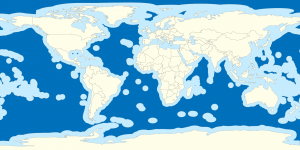
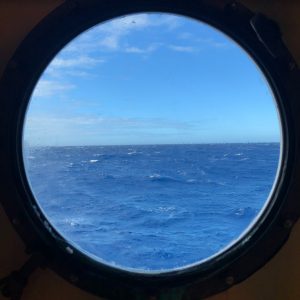
Dilemmas in the deep
About 3 miles below the high seas’ surface, the waters remain biologically and economically relevant. They are blanked by vast fields of potato-sized geological deposits made up of lithium, cobalt, nickel, and rare-earth metals that are also home to many rare and endemic animals. There is a growing interest in developing strategies to exploit these deposits to support our growing technological demands. The removal of these polymetallic deposits will also require the removal of the top 10cm of sediment, which will both be pumped up to the ship overhead. This removal process will fundamentally alter this habitat, resulting in large and long-lasting effects to the deep seafloor and the resident organisms. For more on deep-sea mining basics, check out these blog posts on Oceanbites!
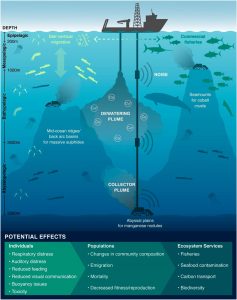
Scientists suspect that the impacts from the mining operation may not be isolated just to the seafloor, but also, to the 3-mile-long water column overhead. The collection vehicle roving along the seafloor sucking up deposits will inevitably kick up sediments creating a trailing cloud of fine-grained particles. An additional plume of sediments in the deep waters of the high seas will occur where the unwanted sediments collected with the nodules are pumped back to the ocean ~1200m below the vessel.
What about my dinner?
The presence of this fine-grained material in the water column could change the water’s chemical properties, increase concentrations of toxic metals (for more on why this is relevant to you, click here), increase noise level and rates of disturbance, and suffocate fish and their prey, and decrease animal’s ability to see or communicate. As a result, animal populations may collapse, especially those that occupy or enter these potentially dense sediment clouds. Many commercially important fish, such as tuna, swordfish, and squid enter this area which means the fishing industry could be negatively impacted by mining-related plumes.
Scientists suspect the plumes may persist in the water for prolonged periods of time and may travel several thousands of kilometers. Currently, it is not possible to model the trajectory or strength of the resulting plumes making assessments of suspected secondary impacts difficult. To address this potential overlap in impacts, Dr. van der Grient and Dr. Drazen from the University of Hawaiʻi sought to understand how much of global fish catch comes from high-seas areas deemed for deep-sea mining and which countries might be most affected by the intersection of mining impacts and fishing.
Intersections in space
The researchers plotted mining regions globally and set three different potential sediment plume spreads of low (50 km), medium (100km), and high (200km). Additionally, they plotted globally reported fishing data including location, species, amount, and country.
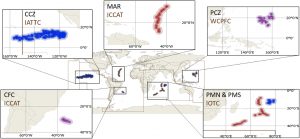
Dr. van der Grient and Dr. Drazen found that the fish catch of most countries minimally overlaps with the mining areas, but the degree of overlap depends on how much the potential mining plumes spread, which is currently unknown. Regardless of spread, some countries, particularly small, developing island nations, rely more heavily on fish stocks that overlap the mining areas. As a result, deep-sea mining could more severely impact fisheries of these developing countries.
Changes to the policy for all humankind
Dr.van der Grient and Dr. Drazen highlight how deep-sea mining and high seas fishing may interact with each other in the future and provide a first pass in understanding the degree to which these fisheries could be impacted by deep-sea mining. The high seas are considered common heritage to humankind and are, therefore, denote common responsibility regarding regulation and management. The researchers successfully synthesize the considerations of fisheries, deep-sea mining, and conservation, which will hopefully attract the attention of all stakeholders in future conversations. Their results incentivize further research into mining plume behavior and encourage future mining operations to set goals of minimizing compounding impacts on fisheries.
I am a PhD candidate in Biological Oceanography at the University of Hawaiʻi at Mānoa. I use DNA found in the environment (eDNA), like a forensic scientist, to detect deep-sea animals and where they live. When I am not studying the ocean, I am most likely in the ocean surfing or diving along the beautiful coasts of O‘ahu.

